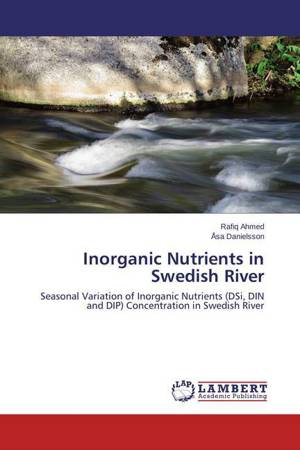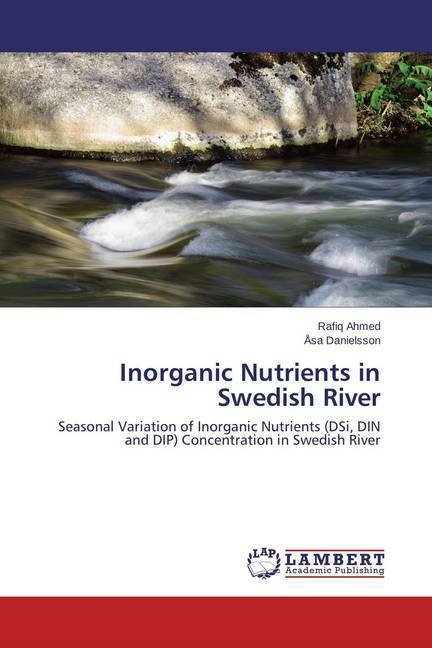
- Afhalen na 1 uur in een winkel met voorraad
- Gratis thuislevering in België vanaf € 30
- Ruim aanbod met 7 miljoen producten
- Afhalen na 1 uur in een winkel met voorraad
- Gratis thuislevering in België vanaf € 30
- Ruim aanbod met 7 miljoen producten
Zoeken
Inorganic Nutrients in Swedish River
Seasonal Variation of Inorganic Nutrients (DSi, DIN and DIP) Concentration in Swedish River
Rafiq Ahmed, Åsa Danielsson
Paperback | Engels
€ 39,45
+ 78 punten
Omschrijving
Rivers have been playing most important role as fresh water source and medium of nutrient transportation from terrestrial to aquatic ecosystem. Inorganic nutrients (DSi, DIN and DIP) are plant available mostly control the productivity of aquatic ecosystem.Study of dissolved inorganic nutrients concentrations in 12 Swedish rivers of different basin characteristics demonstrated both similar and varying behaviour from river to river and from season to season depending on catchment hydrology; land use and geology. Highest concentration did not coincide with the highest runoff. High DSi concentration observed in the unperturbed rivers however, high DIN and DIP concentration observed in agriculture dominated river followed by river basin dominated by industrial and urban activities. DSi and DIN concentration observed high in winter and decreased through spring to reach lowest in summer. DIP concentration although found low in summer but high concentration observed in early spring and early autumn. Rivers with low average runoff positively correlated with DSi and DIN concentration however, DIP demonstrated weak correlation.
Specificaties
Betrokkenen
- Auteur(s):
- Uitgeverij:
Inhoud
- Aantal bladzijden:
- 72
- Taal:
- Engels
Eigenschappen
- Productcode (EAN):
- 9783659634482
- Verschijningsdatum:
- 13/11/2014
- Uitvoering:
- Paperback
- Formaat:
- Trade paperback (VS)
- Afmetingen:
- 152 mm x 229 mm
- Gewicht:
- 117 g

Alleen bij Standaard Boekhandel
+ 78 punten op je klantenkaart van Standaard Boekhandel
Beoordelingen
We publiceren alleen reviews die voldoen aan de voorwaarden voor reviews. Bekijk onze voorwaarden voor reviews.











